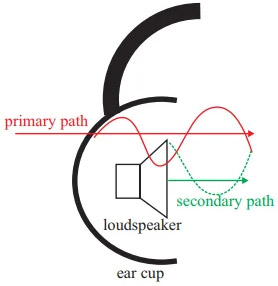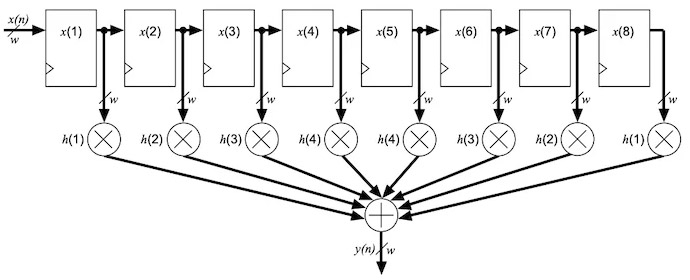This year, COVID-19 has pushed millions of people to abruptly shift to working from home. These significant changes have led to the widespread use of certain gadgets as well.
For example, with many adults working from home and their children attending school online, the cacophony of school lessons, work meetings, and noisy pets can interfere with everyone's online tasks. This has made noise-canceling headphones, which eliminate the background noise from conversations, extremely useful pieces of equipment.
In this article, we’ll take a look at some basic technical concepts that noise-canceling headphones rely on to suppress the noise component.
How Do Noise-Canceling Headphones Work?
Noise-canceling headphones employ the principle of superposition to effectively attenuate the environmental noise inside the ear cup of the headphone. The basic idea is to sense the unwanted sound wave coming from the noisy environment and produce an appropriate canceling sound wave through a loudspeaker.
The canceling wave should match the penetrating noise in amplitude and has the opposite phase as depicted below.

Diagram of a canceling wave. Image used courtesy of Markus Guldenschuh
In this way, the sound wave generated through the secondary path will destructively interfere with the noise coming from the primary path and the noise component will be effectively attenuated. This noise suppression technique is commonly referred to as active noise control (ANC) in literature.
Note that ANC finds use in a wide variety of application areas. For example, many appliances, such as air conditioners, refrigerators, and lawnmowers, employ ANC to attenuate the unavoidable noise from motors, compressors, etc.
While the basic idea of ANC seems straightforward, there are many factors that should be taken into account to achieve the desired level of noise attenuation. Below, we’ll take a look at the block diagram of a simple ANC system that uses a particular type of controller called the “adaptive feedforward controller” to learn more about this technique.
Feedforward ANC
A duct-acoustic feedforward ANC system is shown below:

Duct-acoustic feedforward ANC system. Image used courtesy of Alina Mirza
This example has a single reference sensor (“Reference Microphone”), a single secondary source (“Canceling Loudspeaker”), and a single error sensor (“Error Microphone”). The system picks up the unwanted sound field (the noise component) by the reference microphone and generates the canceling signal at the loudspeaker.
The system adjusts its parameters automatically in a way that the noise picked up by the error microphone is minimized.
A Filter Lies at the Heart of ANC
The control system is basically a digital filter that models the acoustic system between the reference microphone and the loudspeaker to produce a canceling wave with the same magnitude as the noise signal—but with an inverted phase. Designers need to determine the filter order and type (either FIR or IIR).
Aside from the advantages and disadvantages that each of these filter types can offer in general, one of them might be a better option depending on the characteristics of the acoustic system that is going to be modeled.
For example, if the acoustic system has significant sound wave reflections off the boundaries, an IIR filter that includes feedback loops might be more appropriate. However, if there are no reflections, as is the case when the wave travels into free space, a FIR filter can lead to a more efficient solution.

Example of a FIR filter architecture—in this case, an 8-tap FIR filter architecture. Image used courtesy of Altera
The filter order is application dependent and can be affected by the complexity of the canceling sound wave. Moreover, there can be an upper limit on the filter order because the filter order can affect its delay.
The sum of the delay times of the different electronic blocks from the reference microphone to the canceling loudspeaker should not be greater than the time it takes the primary noise wave to reach the loudspeaker location. If this is not the case, the cancelation cannot occur.
Besides, as we’ll discuss below, the filter coefficients are not constant in an ANC system. With a larger filter order, the adaptive algorithm needs to determine a larger number of filter coefficients. This can slow down the adaptive algorithm circuitry or even lead to convergence issues.
The Need For an Adaptive Filter
The filter coefficients of an ANC system are not constant and should be automatically adjusted by the controller. This is because the system characteristics can change with time.
For instance, the flow of air across the loudspeaker or a change in temperature can slightly change the system response. Besides, as the components age over time or fungus grows over the sensors and the loudspeaker in an industrial environment, the system characteristics will change and the noise attenuation performance of the system will degrade.
Hence, an adaptive algorithm is required to automatically adjust the filter coefficients as system changes occur. The adaptive algorithm includes an optimization criterion that minimizes the power of the sound field sensed by the error microphone. The block diagram of such a system is depicted below.

Block diagram of how an adaptive algorithm can minimize the power of the sound field. Image used courtesy of Sen M. Kuo
Conclusion
It's likely that the noise-canceling headphone market will only continue to grow in popularity as employees hunker down from home in the coming months. Hopefully this article gave you a better idea of the underlying technology at play in these devices.
